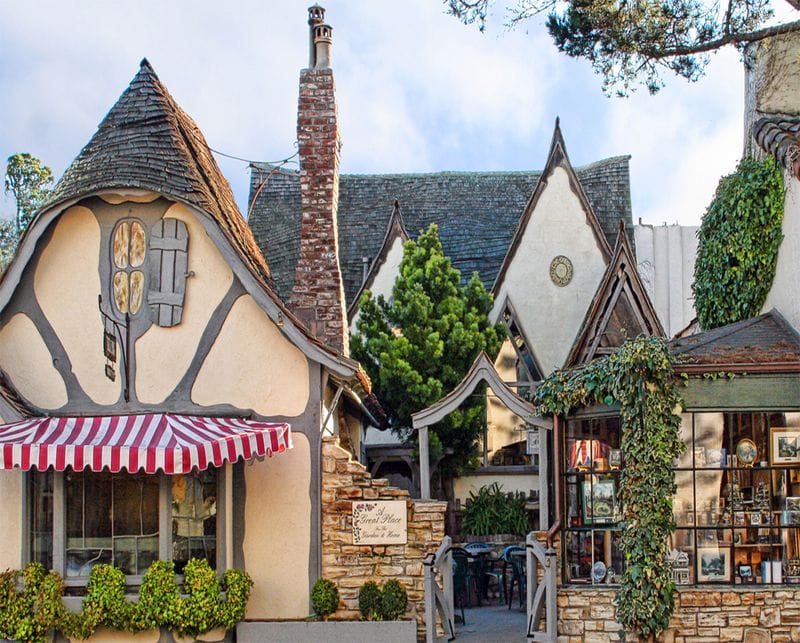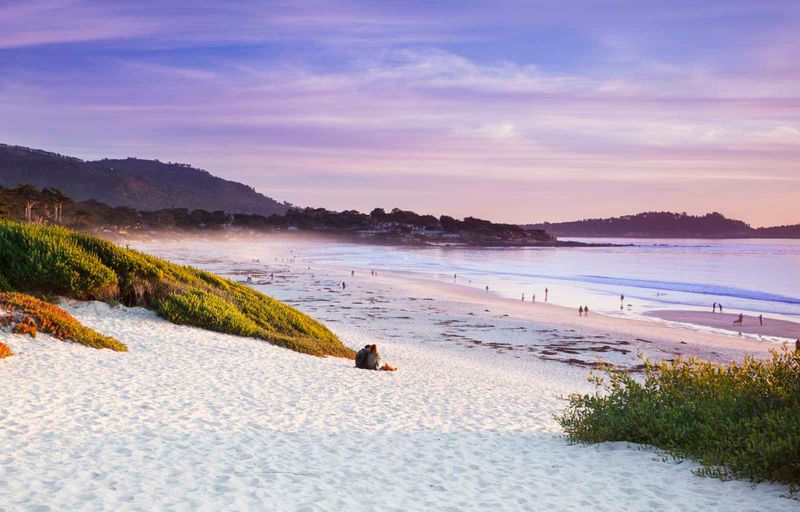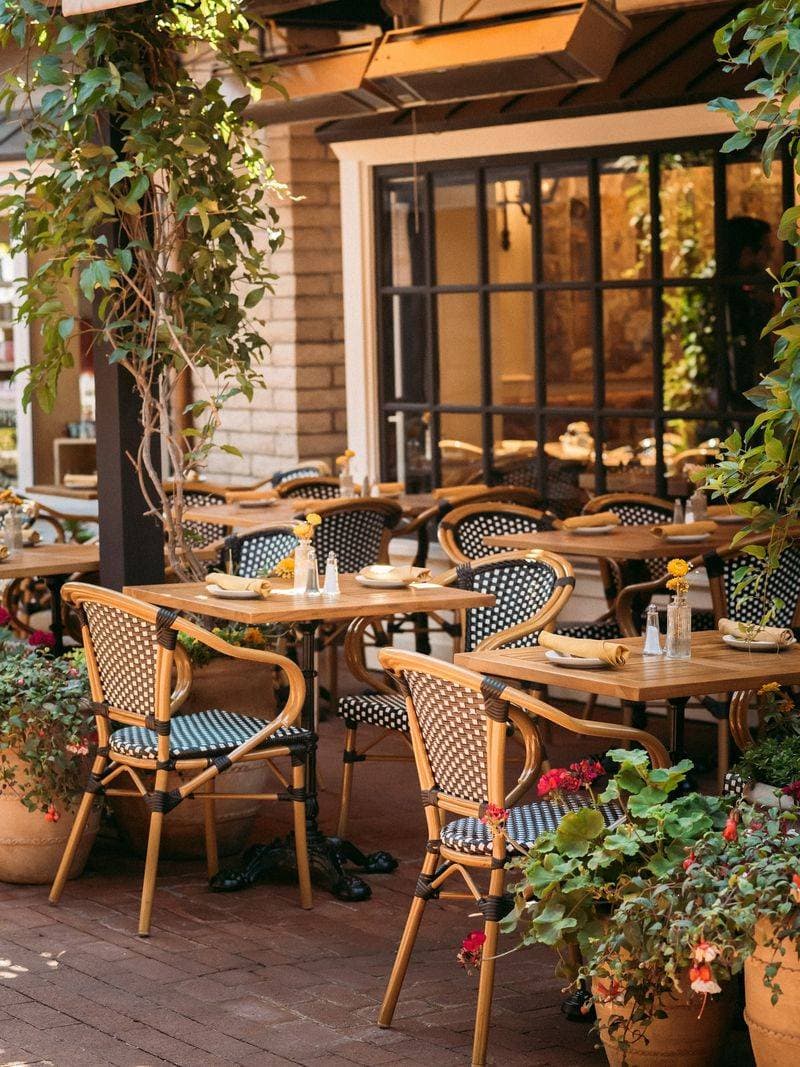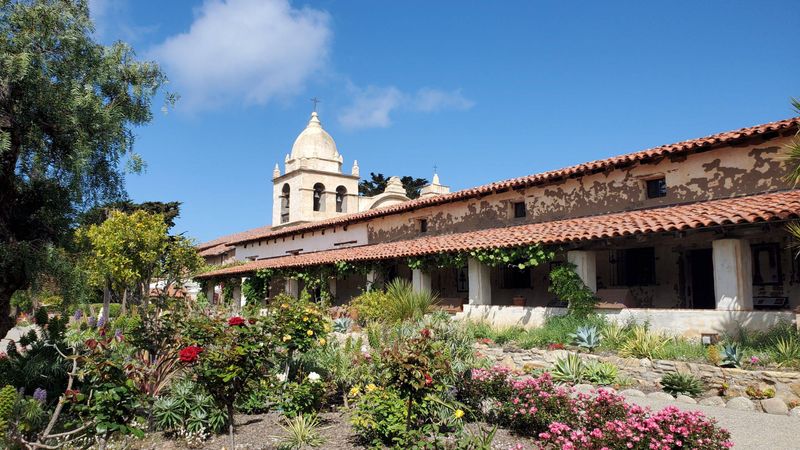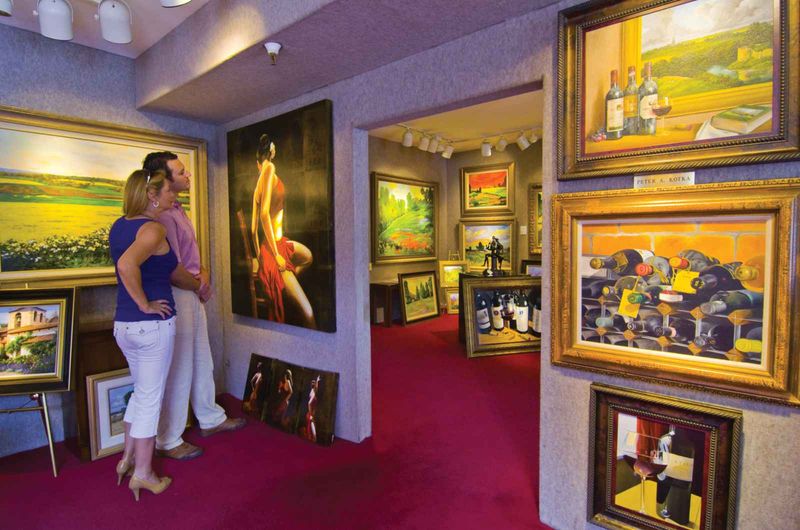Nestled along California’s central coast between Monterey and Big Sur sits Carmel-by-the-Sea, a magical village that seems plucked from a storybook. This charming coastal town combines European-style architecture with breathtaking natural beauty, creating a unique escape for visitors. From enchanting cottages to pristine beaches, Carmel offers a perfect blend of small-town charm and spectacular scenery that makes it one of California’s most beloved destinations.
Wander Storybook Streets
Stepping onto Carmel’s streets feels like entering a European fairytale frozen in time. Whimsical cottages with names instead of addresses line winding lanes, their thatched roofs and rounded doorways creating an atmosphere of enchantment. Many of these architectural gems were designed by Hugh Comstock in the 1920s, establishing the village’s distinctive “Hansel and Gretel” aesthetic.
Hidden passageways reveal secret courtyards housing art galleries and boutiques, while flower boxes overflow with colorful blooms year-round. The absence of street addresses (residents pick up mail at the post office) adds to the town’s old-world charm.
At night, gas lamps cast a warm glow over cobblestone paths, completing the storybook experience. Even practical elements like street signs and businesses blend seamlessly into the fairytale setting, maintaining the illusion that you’ve wandered into another world entirely.
Relax on Carmel Beach
White sand stretches in a perfect crescent beneath cypress-covered bluffs at Carmel Beach, creating one of California’s most photogenic shorelines. Morning fog often rolls dramatically across the beach before giving way to brilliant sunshine, giving early risers a magical experience all to themselves.
Unlike many California beaches, Carmel’s remains refreshingly undeveloped – no concession stands or rental chairs interrupt the natural beauty. Dogs frolic unleashed while their owners stroll along the water’s edge. Surfers paddle out at the north end where consistent waves break year-round.
As afternoon fades, locals and visitors gather with wine glasses and picnic baskets for the nightly sunset show. Purple and orange hues paint the sky while the silhouettes of cypress trees stand sentinel along the shore, creating a peaceful end to perfect beach days.
Indulge in Culinary Delights
Food lovers find paradise in Carmel’s surprisingly diverse culinary landscape. Despite its small size, this village boasts over 60 restaurants within one square mile, ranging from casual cafés to fine dining establishments helmed by award-winning chefs.
Fresh seafood dominates many menus – abalone, sand dabs, and Dungeness crab showcase the bounty of Monterey Bay. The region’s agricultural heritage shines through in farm-to-table offerings that change with the seasons. Wine enthusiasts can explore over a dozen tasting rooms featuring vintages from nearby Carmel Valley and beyond.
Many eateries occupy charming converted cottages with intimate dining rooms and garden patios. Morning pastries at family-owned bakeries, afternoon wine flights in sunny courtyards, and candlelit dinners in hidden garden settings create a full day of gastronomic pleasures – all within walking distance of each other.
Visit Historic Carmel Mission
Rising from lush gardens, the Carmel Mission’s weathered stone façade tells stories spanning 250 years of California history. Founded in 1771 by Father Junípero Serra, this beautifully preserved Spanish mission stands as both architectural treasure and cultural landmark where California’s colonial past intersects with its present.
Sunlight streams through the basilica’s star-shaped window, illuminating hand-carved statues and ancient artifacts. The mission’s courtyard garden bursts with heritage roses and Mediterranean plants, creating a tranquil oasis where time seems to slow.
Beyond its religious significance, the mission houses a fascinating museum displaying indigenous artifacts alongside Spanish colonial treasures. Father Serra’s simple cell remains preserved, offering glimpses into mission life. The cemetery holds generations of stories, including Serra’s own grave, marked by a simple monument beneath towering cypress trees that have witnessed centuries of California’s evolving story.
Explore Breathtaking Coastal Scenery
Mother Nature outdid herself when crafting the coastline surrounding Carmel. Just minutes south, Highway 1 winds dramatically toward Big Sur, hugging cliffs hundreds of feet above crashing waves. Pull-offs reveal panoramic vistas where California condors soar overhead and migrating whales breach offshore during seasonal journeys.
Point Lobos State Natural Reserve, often called “the crown jewel of the State Park system,” offers easy trails through wind-sculpted cypress groves to hidden coves. Sea otters wrap themselves in kelp while floating on their backs, and harbor seals bask on rocky outcroppings.
North of town, 17-Mile Drive showcases the famous Lone Cypress, ancient Del Monte Forest, and pristine beaches accessible only by foot paths. Whether exploring by car, bicycle, or hiking boots, the natural beauty surrounding Carmel provides endless opportunities for discovery and awe, making it impossible to capture the majesty in photographs alone.
Immerse in Arts and Culture
Creativity flows through Carmel’s veins like nowhere else. The town’s artistic legacy began when writers and painters fled San Francisco after the 1906 earthquake, establishing a bohemian colony that still thrives today. Jack London, Mary Austin, and photographer Ansel Adams all found inspiration in Carmel’s natural beauty and creative atmosphere.
Over 100 galleries pack the village’s tiny footprint, showcasing everything from traditional landscapes to cutting-edge contemporary works. The Sunset Cultural Center, housed in a Gothic stone school building, hosts world-class performances in an intimate setting. Summer brings the Carmel Bach Festival, filling the village with classical music.
Local artists still gather at Carmel Beach to paint en plein air, continuing traditions established generations ago. The Forest Theater, one of America’s oldest outdoor venues, presents plays under the stars surrounded by pine trees – embodying the magical merger of art and nature that defines Carmel’s unique cultural identity.

